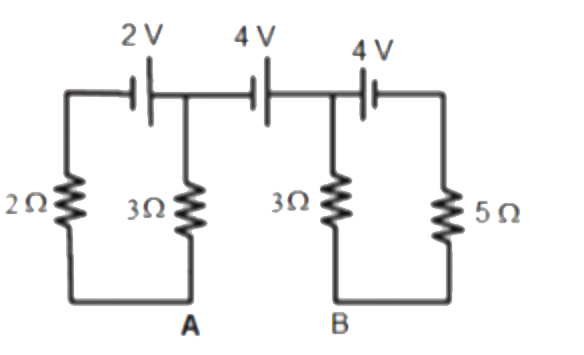How is voltmeter connected in the circuit to measure potential difference between two points ?
To measure the potential difference between two points in a circuit using a voltmeter, follow these steps:
1. Identify the Points: Determine the two points in the circuit where you want to measure the potential difference. For example, you may want to measure the voltage across a resistor (R).
2. Understand Voltmeter Connection: A voltmeter is designed to measure the voltage (potential difference) across two points. It must be connected in such a way that it can measure this difference without affecting the circuit significantly.
3. Connect in Parallel: To measure the potential difference between the two points, connect the voltmeter in parallel with the component (like the resistor) across which you want to measure the voltage. This means one terminal of the voltmeter should be connected to one point, and the other terminal should be connected to the second point.
4. Reason for Parallel Connection: The reason for connecting the voltmeter in parallel is that it has a very high internal resistance. If connected in series, it would significantly reduce the current flowing through the circuit, leading to inaccurate readings. By connecting in parallel, the voltmeter can measure the voltage drop across the component without influencing the overall circuit operation.
5. Check Connections: Ensure that the connections are secure and that the voltmeter is set to the appropriate voltage range for the measurement you are taking.
6. Read the Measurement: Once the voltmeter is connected properly, turn on the circuit and read the measurement displayed on the voltmeter. This value represents the potential difference between the two points.
Topper's Solved these Questions
Similar Questions
Knowledge Check
In the given circuit, the potential difference between A and B is
 A10 VB15 VC20 VD5V
A10 VB15 VC20 VD5V
The potential difference between points A and B is

View SolutionIn the circuit below, the potential difference between A and B is

View SolutionFor the circuit in find the potential difference between points a and b.

View SolutionIn the circuit shown, the potential difference between A and B is .

View SolutionIn the given circuit calculate potential difference between A and B

View SolutionIn given circuit , the potential difference between points A and B is

View SolutionIn the given circuit calculate potential difference between the points P and Que.
View Solution

